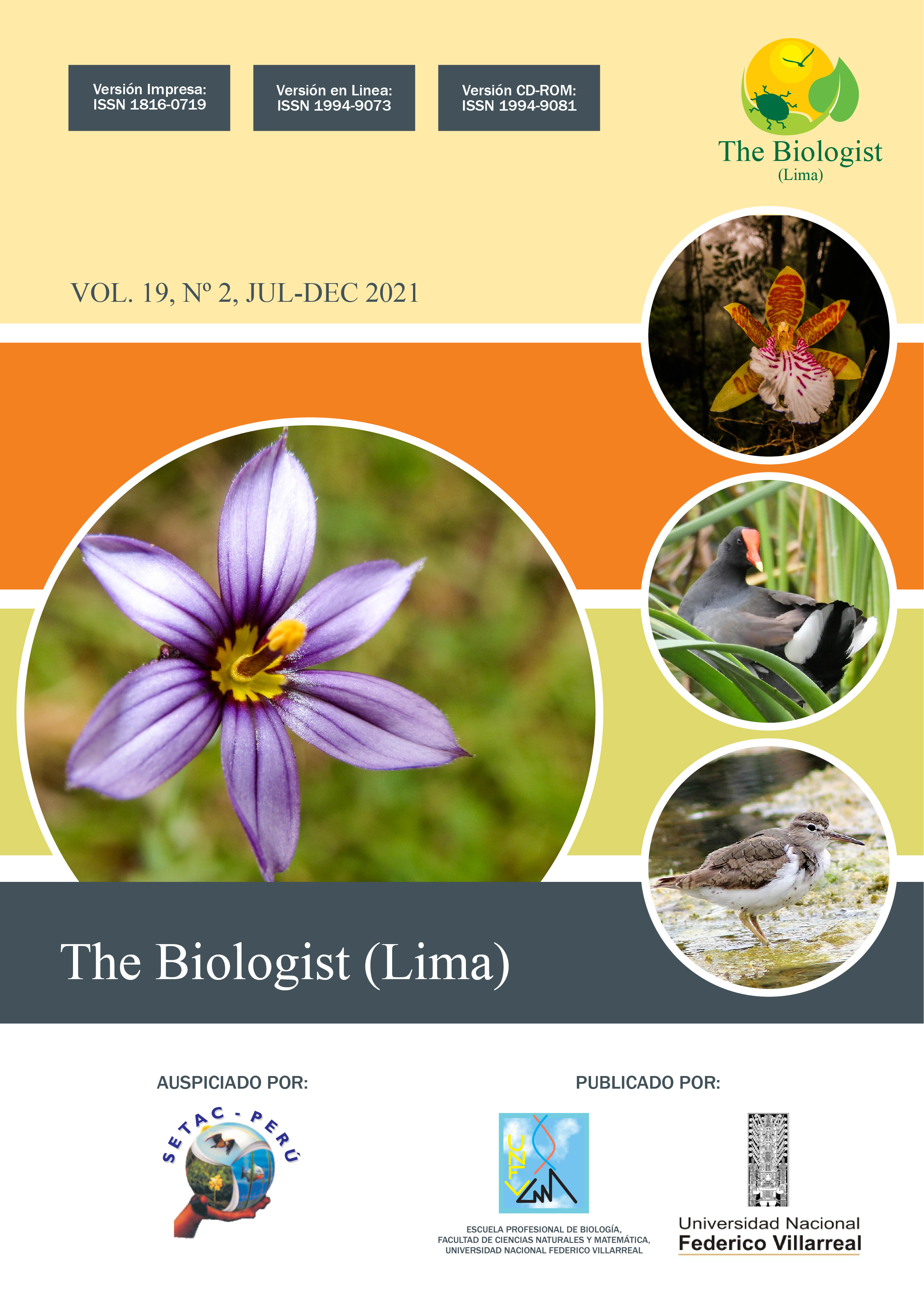NEURO-MEMORY RESPONSE TO PHYSICO-CHEMICAL CONDITIONS OF WATER QUALITY IN THE BIOMONITOR GAMBUSIA PUNCTATA, POEY 1854
DOI:
https://doi.org/10.24039/rtb20211921175Keywords:
bioassay, fish, learning, physicochemical parameters, water qualityAbstract
The aim of the study to evaluate the memory neuro-response to physical-chemical conditions of water
quality in the biomonitor Gambusia punctata, Poey 1854. The study was carried out between February
and April 2021 in the environmental zone of approach that corresponds to the lower part of the
Almendares river, Havana, Cuba. The physicochemical parameters (PFQ) were measured in situ: dissolved oxygen, pH, total dissolved solids and electrical conductivity. An experiment was carried out
that consisted of introducing a rod every two hours during a range of eight hours where a simulated larva of Aedes aegypti (Linnaeus, 1762) was transported from its interior, and then the neuro-memory of time was recorded for the reaction towards its probable consumption. The brains of the males were measured against the quality of the water. The PFQs did not meet the recommended values. The reaction time towards the orientation of the stimulus decreased as the hours passed and there were no statistically significant differences, indicating immediate neuro-memory. There were also no significant differences in brain growth. It is concluded that as time passes there is a reaction to a recognized stimulus during the life cycle and, probably, the delay is due to environmental conditions. However, when the stimulus is presented, the reaction time is immediate; therefore, there is neuroimaging towards information learned and related to food, such as the larvae of A. aegypti.
Downloads
Published
How to Cite
Issue
Section
License

This work is licensed under a Creative Commons Attribution-NonCommercial-NoDerivatives 4.0 International License.
Objeto: El AUTOR-CEDENTE transfiere de manera TOTAL Y SIN LIMITACIÓN alguna al CESIONARIO (Revista The Biologist (Lima)) los derechos patrimoniales que le corresponden sobre sus obras por el tiempo que establezca la ley internacional. En virtud de lo anterior, se entiende que el CESIONARIO adquiere el derecho de reproducción en todas sus modalidades, incluso para inclusión audiovisual; el derecho de transformación o adaptación, comunicación pública, traducción, distribución y, en general, cualquier tipo de explotación que de las obras se pueda realizar por cualquier medio conocido o por conocer en el territorio nacional o internacional.
Remuneración: La cesión de los derechos patrimoniales de autor que mediante este contrato se hace será a título gratuito.
Condiciones y legitimidad de los derechos: El AUTOR-CEDENTE garantiza que es propietario integral de los derechos de explotación de la(s) obra(s) y en consecuencia garantiza que puede contratar y transferir los derechos aquí cedidos sin ningún tipo de limitación por no tener ningún tipo de gravamen, limitación o disposición. En todo caso, responderá por cualquier reclamo que en materia de derecho de autor se pueda presentar, exonerando de cualquier responsabilidad al CESIONARIO.
Licencia de acceso abierto: El AUTOR-CEDENTE autoriza que manuscrito publicado en la Revista Científica The Biologist (Lima) (versión Impresa ISSN 1816-0719, versión en línea ISSN 1994-9073) permanece disponible para su consulta pública en el sitio web http://revistas.unfv.edu.pe/index.php/rtb/index y en los diferentes sistemas de indexación y bases de datos en las que la revista tiene visibilidad, bajo la licencia Creative Commons, en la modalidad Reconocimiento-No comercial- Sin Trabajos derivados –aprobada en Perú, y por lo tanto son de acceso abierto. De ahí que los autores dan, sin derecho a retribución económica, a la Escuela Profesional de Biología, Facultad de Ciencias Naturales y Matemática de la Universidad Nacional Federico Villarreal (EPB - FCCNM - UNFV), los derechos de autor para la edición y reproducción a través de diferentes medios de difusión.









































